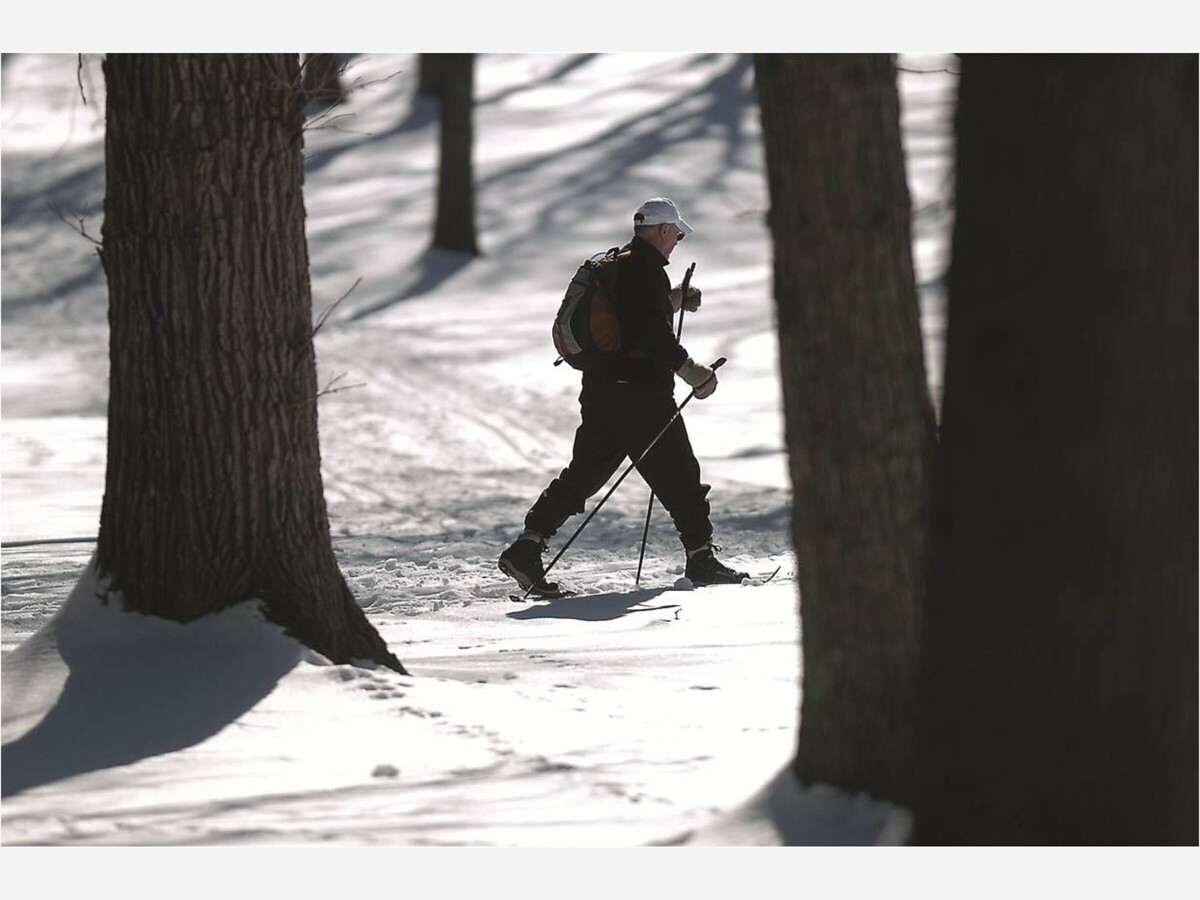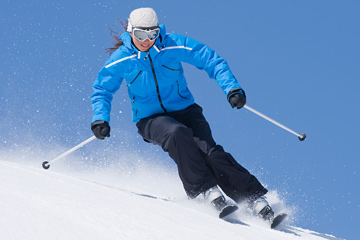
Athletes jump off hills in the sport of skiing long jump, depending on their body positioning and the lift from the air beneath them. It's considered one of world's hardest sports.
The skier must adopt several body positions which will maximize his or her chances of landing with safety and get the most lift from the sky above. Skiers often use the following positions: a forward lean with straight knees from the ankles up, parallel skis held slightly upward and the V jump style (in which the ski tips point outward in opposing directions).
In the 1990s, Swedish jumper Jan Boklov pioneered a technique that added more lift by using the front edges of the skis to point downhill and uphill. This position minimized wind resistance and was an important factor in the development of longer ski jumps.
The judges will evaluate the body positioning of the long-distance runner on the ground and in the air as well as the landing. Each judge can award up to twenty points based on the style and form of a jumper.

The size of the hill used in each competition as well as the body position and lift provided by air below determine the length of a jump. The smallest hill size is referred as a K-point, and the largest one is referred to a HS.
Five judges score and inspect each jump. Each jumper gets two jumps and the athlete with the highest score wins. Five judges will decide on the distance and the style, using a scale ranging from 0-20. Each metre is worth one point.
Historically, a jump's length was determined by how far it ran before the competition started (90 meters for a normal hill and 120 for a large hill). But for the Olympics of 1992, jumps were classified by their K point distance. Since then, all jumps have been categorized by their K-point distance (normal hill: 98 meters; large hill: 125 meters).
Although ski jumping is relatively easy to perform for the average person, it requires an extensive amount of training. Skiers who want to be able to perform a long leap must use plyometric exercises to develop explosive force.
Athletes also need good balance and flexibility in order to successfully navigate steep slopes and ice filled channels on the hill. This is especially dangerous during winter when jumpers are unable to control speed or direction.

Yuki Ito holds the World Record of longest ski jump, with 154 m. It was set during a practice jump at the Bad Mitterndorf ski jump in Austria, and it is still valid today in that location.
Even though it is dangerous, ski jumping remains one of the most popular and exciting events at the Olympic Games. This is due to the sheer excitement of exploding into the sky. It is for this reason that the Olympics hold a very special place in skiers' hearts around the world.
FAQ
What can I pack in my bag?
You should always have at least two pairs of shoes. Two pairs are needed for daily walking in the city and two for vacation.
Make sure you have enough clothes to cover both. If you are traveling by plane, you need to make sure you have an extra shirt, pants, underwear, and socks.
Consider bringing some clothes if you are planning to stay somewhere for a longer time. This will ensure that you don't feel awkward while shopping for new outfits.
Comfortable shoes are a must if you're going to be taking the train or bus. And if you're driving, you'll need to ensure you've got a spare set of tires.
You will also need to carry plenty of toiletries such shampoo, toothpaste (deodorant), moisturizer, and shampoo.
You'll also need a flashlight and an insect repellent.
Make sure you have all the items in one bag. This will save you time and space.
Don't forget to bring a towel and a washcloth. These will come in handy after a long day sightseeing.
How can I travel light?
There are no right or wrong answers when packing for a vacation. These tips will help guide you in choosing what to bring on your trip.
-
Only bring what you truly need.
-
Only pack what you will actually wear.
-
Don't buy too many.
-
You should ensure that you have enough space in your luggage.
-
You should always double-check that everything is packed.
-
Get free storage
-
Instead of purchasing bottled water, use reusable water bottles.
-
Instead of carrying a suitcase, use a backpack.
-
Walking or cycling is a better option than using public transport.
-
The right size bag is important.
-
Avoid carrying heavy items.
-
Prepare for anything.
-
Leave nothing behind.
What size luggage should I carry?
The amount of luggage you take depends on the length of your trip. You will only need to bring hand luggage if you're traveling by plane. This is typically less than 20kg. If you are traveling by plane, you only need hand baggage, usually less than 20kg.
You will receive a form with all the details about your flight when you arrive at airport. This form will ask for information such as your baggage weight and if you require assistance to check them in.
Always check your luggage before you leave the house. If you don't, then you could find yourself waiting around for hours while everyone else checks their luggage.
It's best to travel light, as you never know when something might happen. For instance, if your bag is lost or stolen, you won’t have any clothes.
What should you pack for a vacation?
It is important to plan what you will do during your vacation. Not just packing clothes. Consider where you're going and how much time you'll be staying there.
It is important to consider what kind of activities you want to engage in. Scuba diving is a great option if you're going to exotic destinations. You may also be interested in participating in local festivals and events, especially if your stay is longer.
It is crucial that you inform the people responsible for your care if you have any health problems. They can then plan accordingly.
You should not forget these things when you travel.
When you travel, you'll find yourself in situations with little time to make decisions. It's okay to be spontaneous.
You might be stuck somewhere for hours, days, weeks, or even months. If you've planned ahead, you'll have food, water, shelter, and a place to sleep. You may need to improvise if you don't plan ahead.
In these cases, you'll probably have to rely on what you know how to do best. It means you have to be able to quickly make decisions based upon your experience and instinct.
Sometimes you don't have a choice. You might find yourself in an area without cell service, out of gas or robbed. You'll need to adapt quickly to these situations.
Keep calm, be focused, and take action. Don't panic. Instead, keep your eyes on the things you can control.
You can choose which direction you want to go if you're lost among the woods. For those who are hungry, berries and mushrooms can be eaten. Rainwater can be drank or snowmelt.
If you are tired, you can take a break. You can wrap up if you're cold. If it is wet, you have the option to change clothes. No matter what you do, it will make you feel better to stay positive.
What are some ways to make traveling more enjoyable for my family?
Not all about going from one point to the next. It should include all the experiences along your journey.
We have developed an app called "Traveler", which allows you to create itineraries and plan your trip based on your interests.
We are working on additional features like booking hotels and flights, renting cars, etc.
This project was created to provide a simple tool to help people plan their travels and make the most of what they have while on vacation.
What snacks should I bring to the plane?
There are many different types of snacks available for you to choose from when flying. Consider bringing along any food that you are fond of while traveling.
If you are a chocolate lover, you may want to bring some chocolates along with other snacks like crisps, nuts, and biscuits.
You might consider packing cheese or crackers if you are looking for something savory.
You should also consider what kind of drinks you would like to have on board. Maybe you prefer hot or cold drinks?
Whatever kind of snack or drink that you choose to bring along with you, make sure everything is packed securely.
You won't have to worry about your items getting damaged while traveling.
Statistics
- Between the ages of 11 and 13, kids, or tweens, will likely want some autonomy but also need boundaries. (travelandleisure.com)
- Pack sweaters, jackets, and underwear in reusable compression bags creating up to 75% more space in your luggage. (wikihow.com)
- Alcoholic beverages with 24% alcohol or less are not subject to limitations in checked bags. (tsa.gov)
- You can use compression sacs or cubes to reduce the volume of your clothes by up to 80%—this is especially convenient for bulky items such as sweaters and jackets. (eaglecreek.com)
- Alcoholic beverages with more than 24% but not more than 70% alcohol are limited in checked bags to 5 liters (1.3 gallons) per passenger and must be in unopened retail packaging. (tsa.gov)
External Links
How To
How to travel cheap
People love to travel. But, it can be expensive. Traveling can be expensive due to the high cost of airfares, hotels, rental cars and transportation. If you have a child, it's even more expensive. So, how can we make it more affordable to travel?
The first step is to look at ways to lower costs. Plan your trip well in advance to receive discounts on airfares, hotel rooms and car rentals. You can also save money by booking a hotel at a low price. A hostel is a good option for those who don't want too expensive accommodation. You can also rent a room in someone else's home by using public transport or Airbnb.
It is worth spending a little more to avoid additional fees. You should consider buying a SIM Card for your phone if you don't have access to Wi-Fi. You won't be charged roaming fees and you don't have to pay any roaming charges. And if you're going to eat outside, order something like a pizza or pasta to cut down on the cost.
Another thing you can do is try to share the expenses with others. You could ask your friends and family to split the bill. Maybe you can even work together to purchase tickets. Sharing expenses can help you save money, and it will reduce stress.
If you still can't afford to travel, then remember that you can always go hiking or camping. These activities are usually completely free. Just bring water, snacks. Insect repellent, sunscreen, insect repellent and a first aid kit.
There are many different ways to make travelling affordable. Be creative and think of unique ways to make traveling affordable.